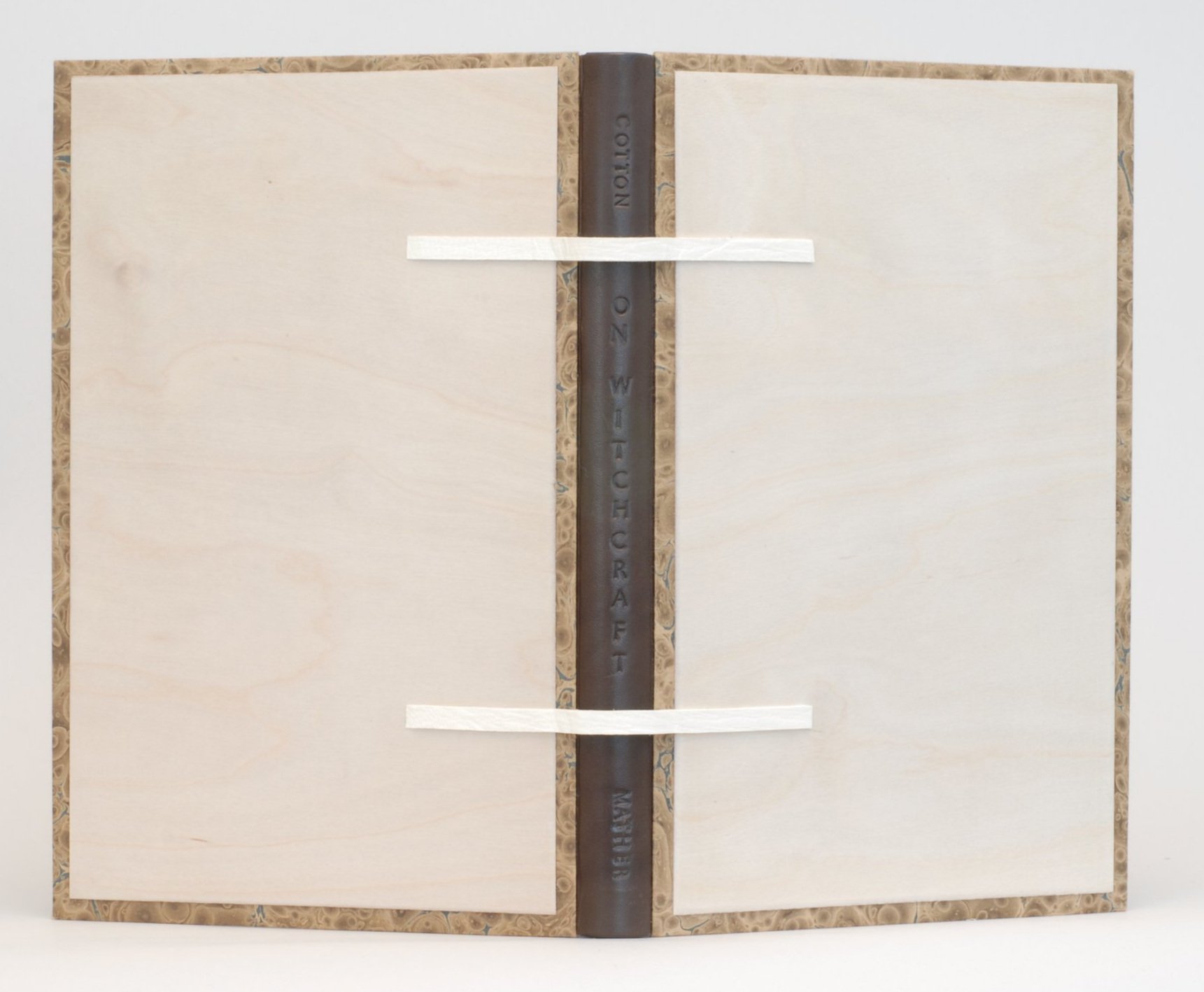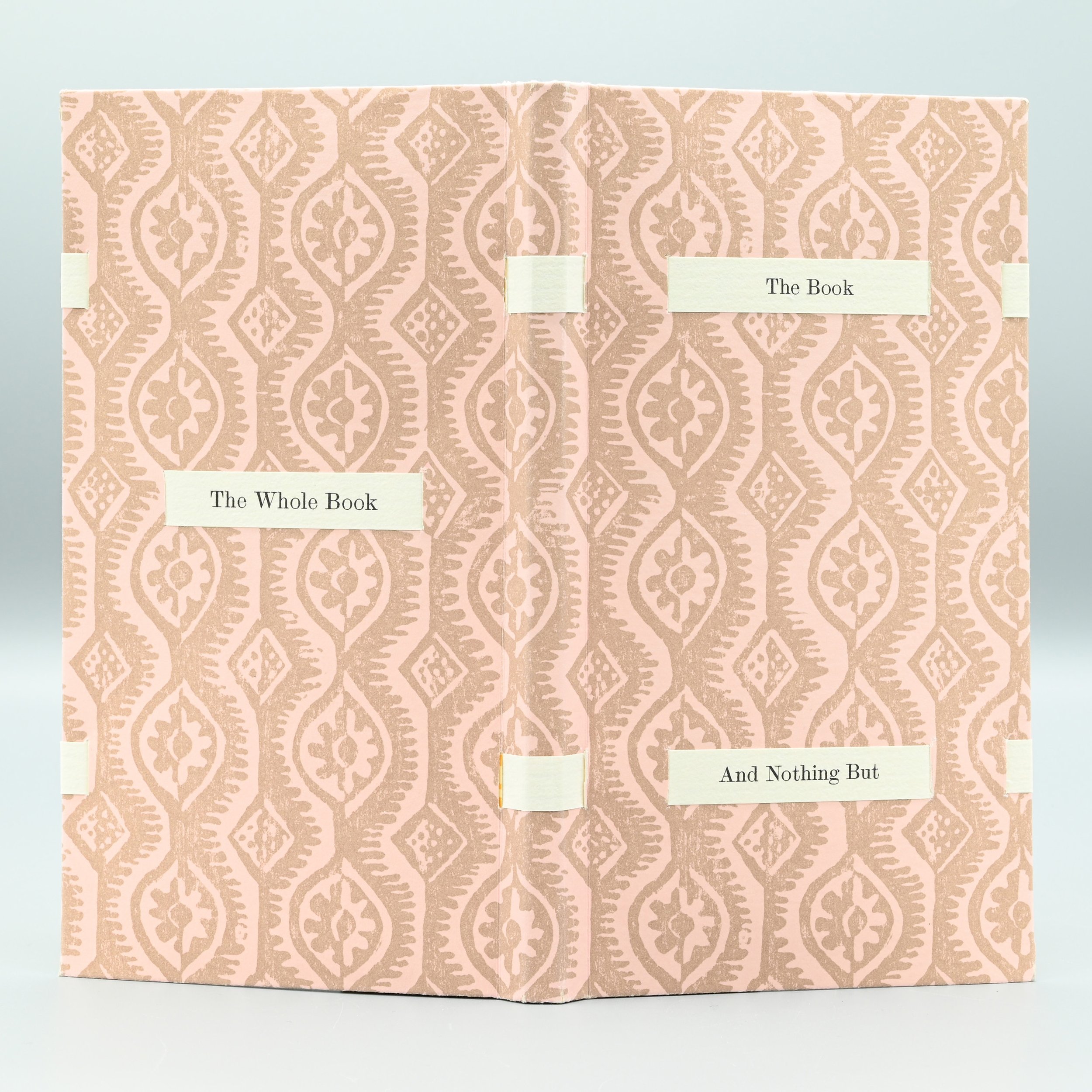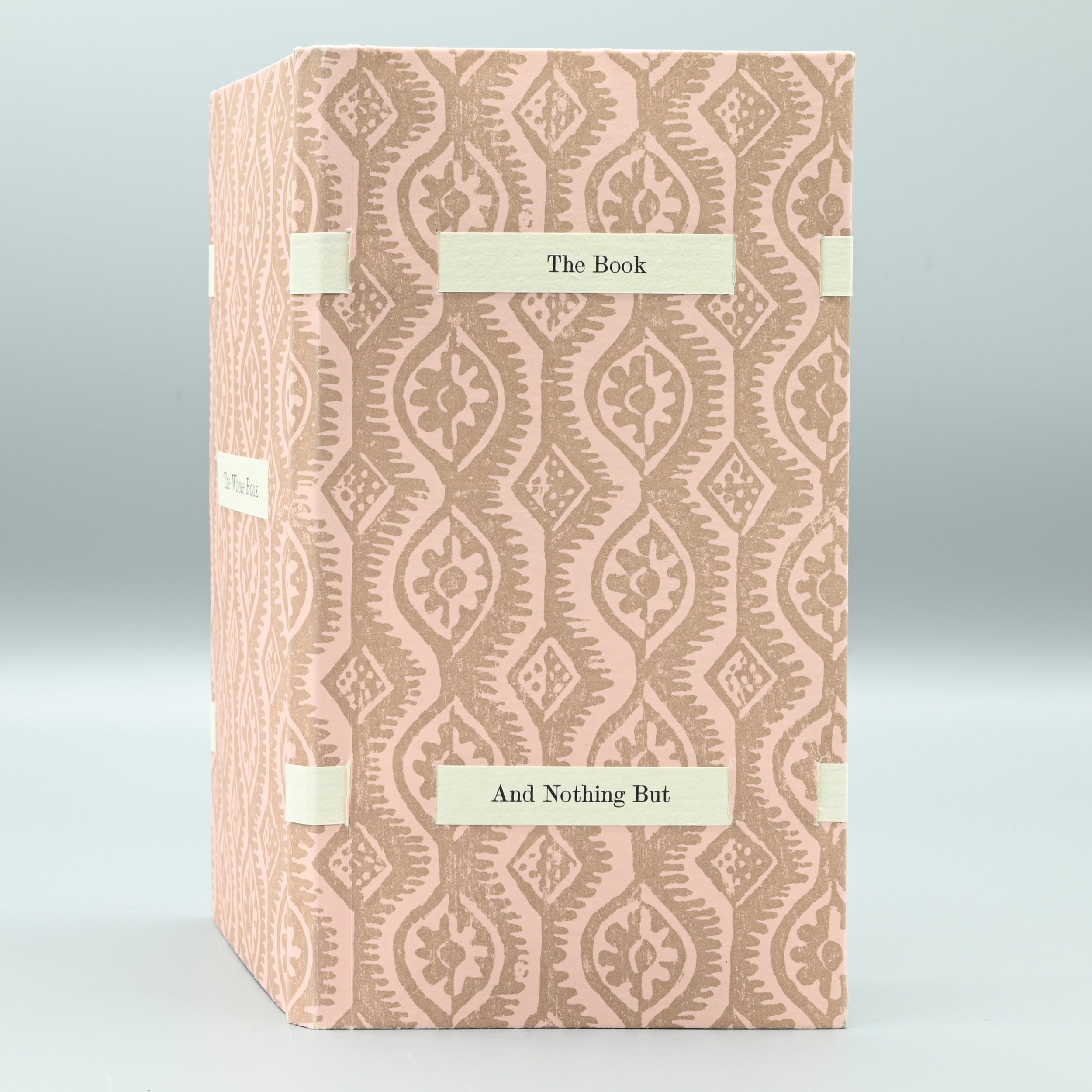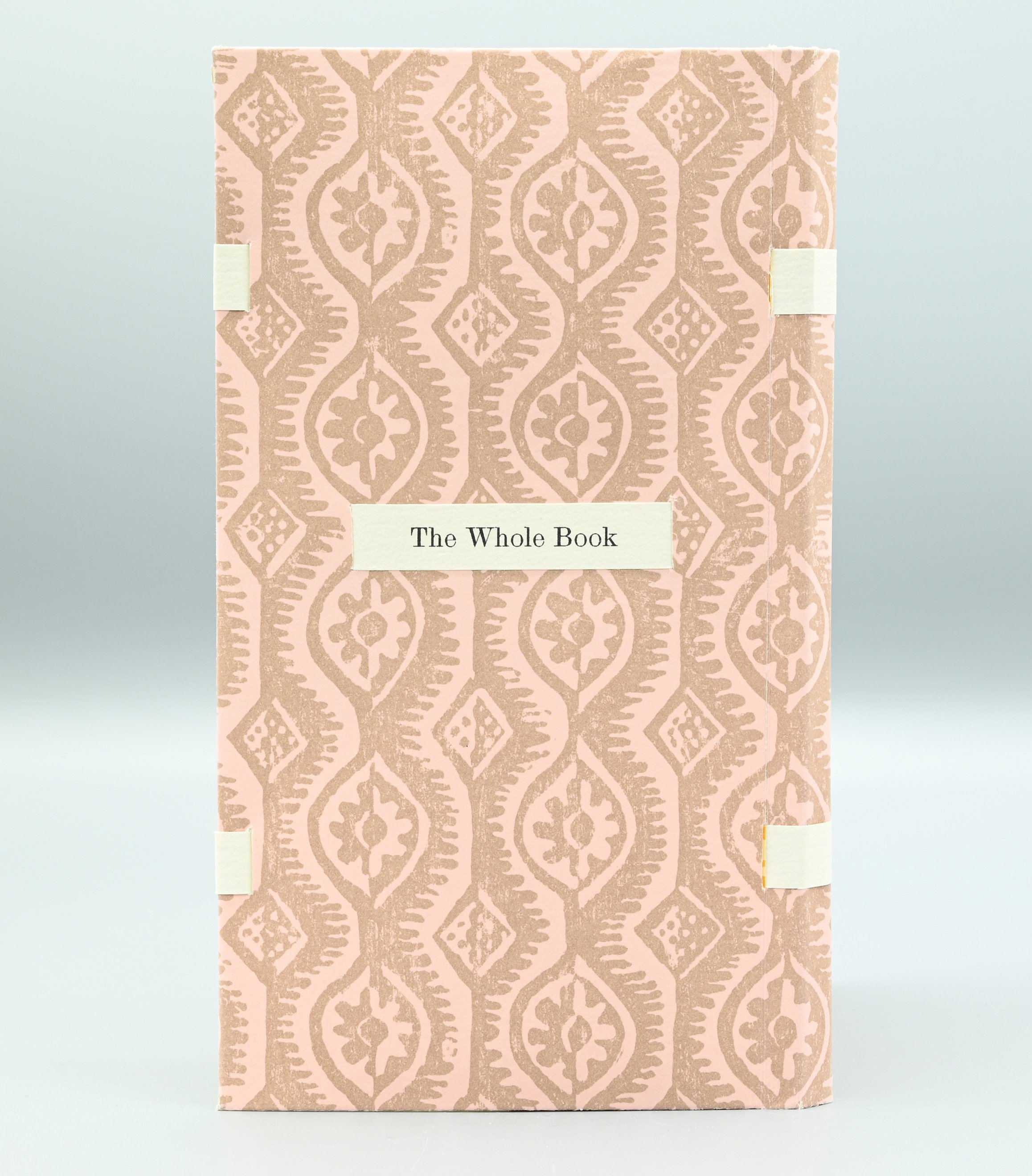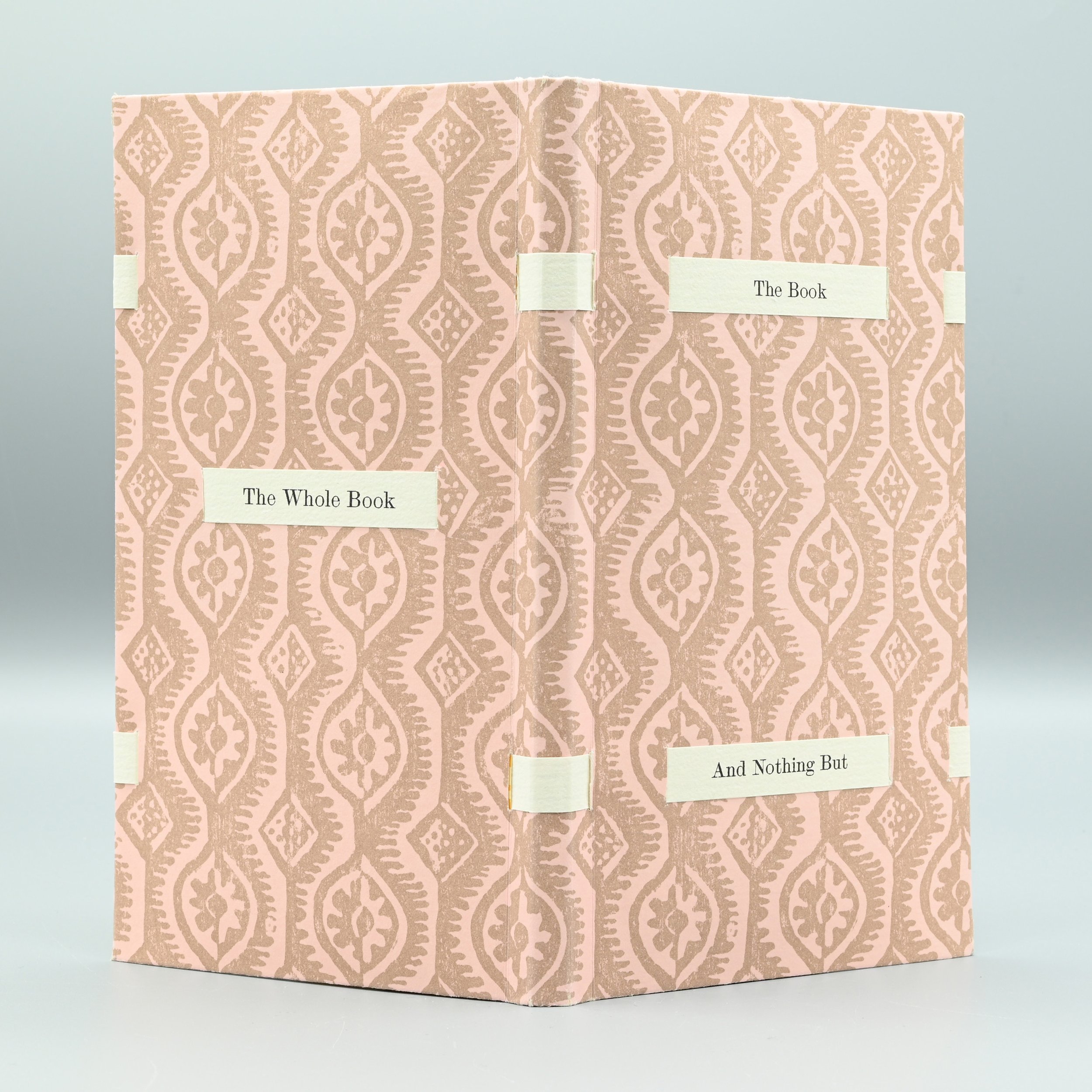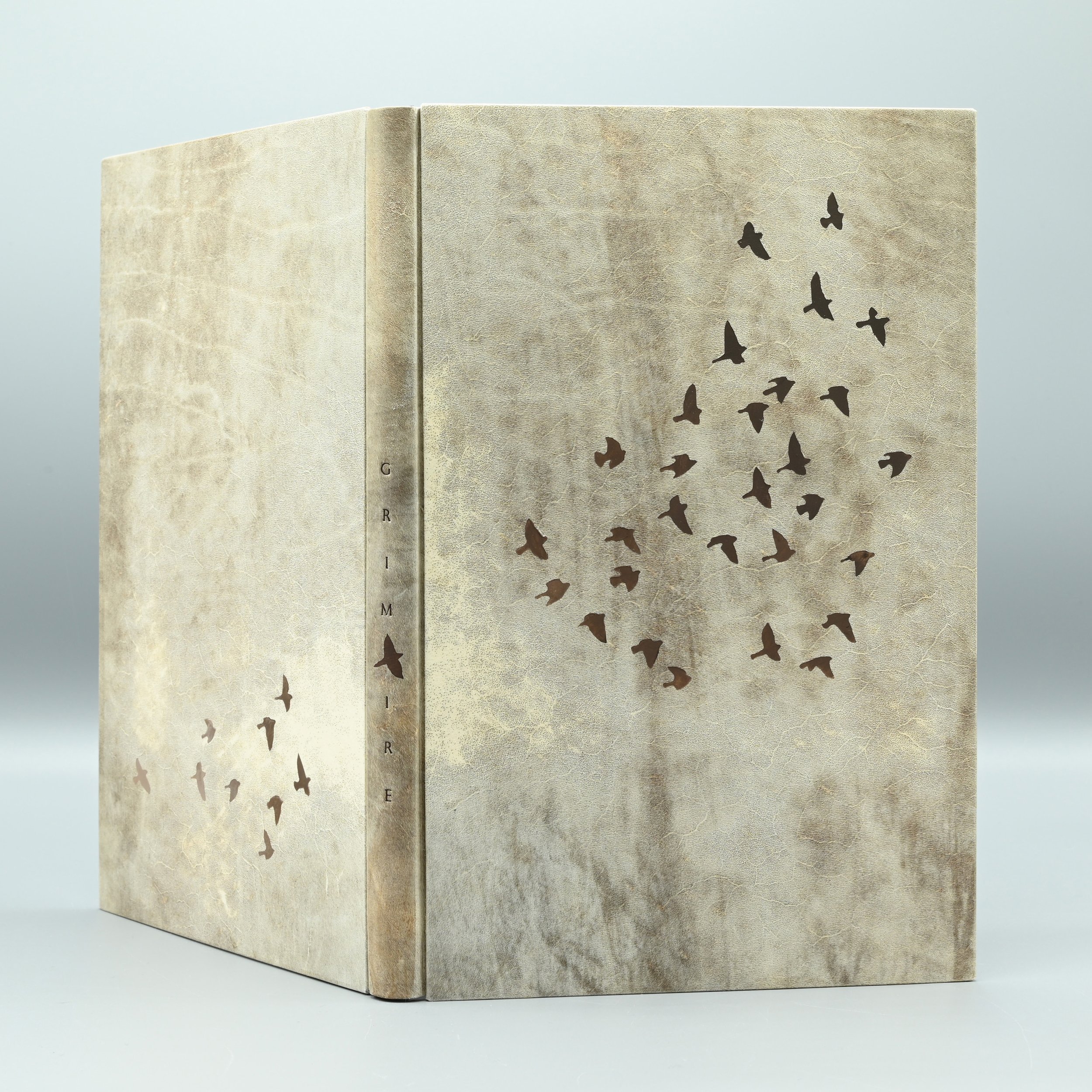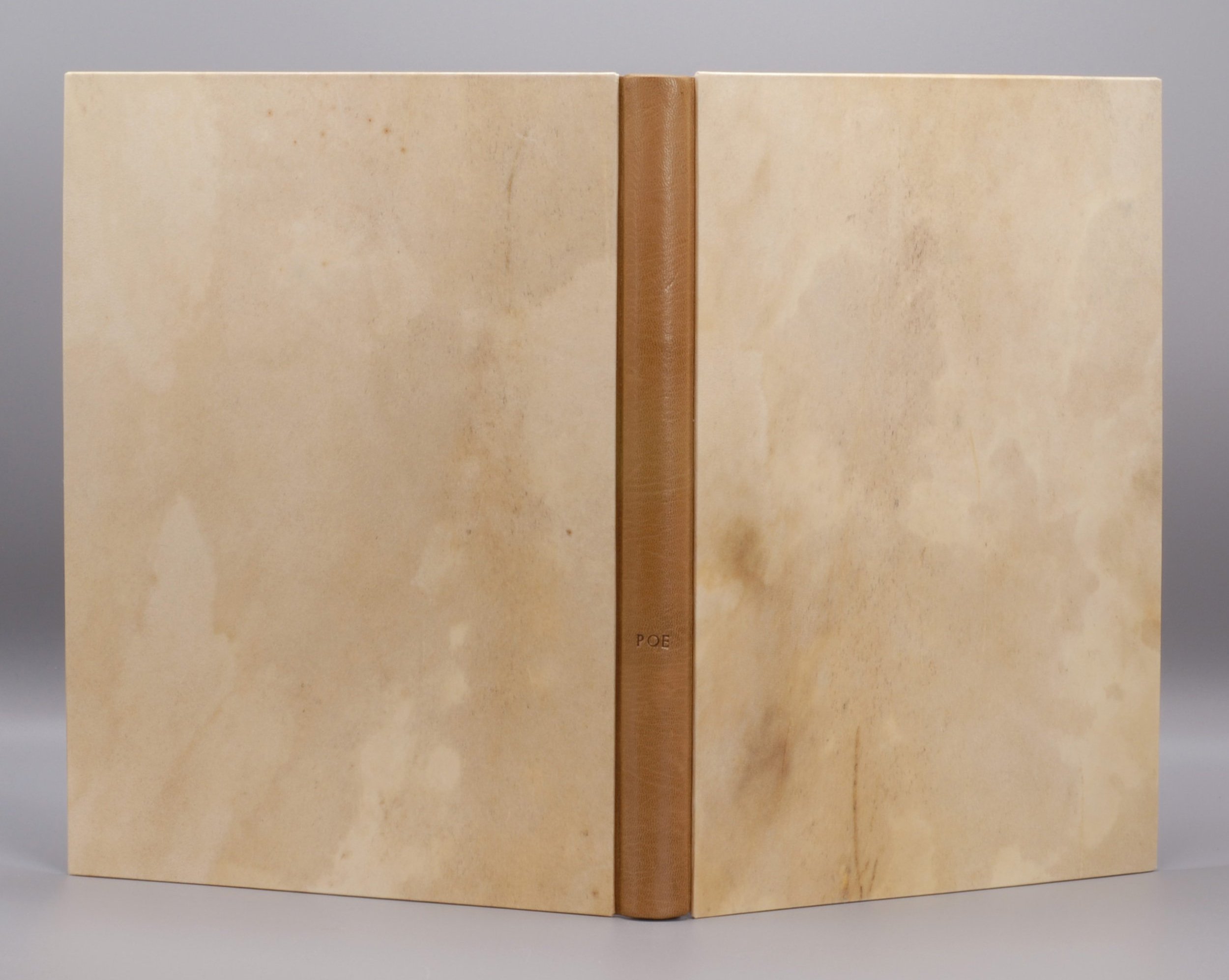 Image 1 of 3
Image 1 of 3

 Image 2 of 3
Image 2 of 3

 Image 3 of 3
Image 3 of 3




Poe’s Phantasia (Arion Press)
Poe’s Phantasia by Edgar Allan Poe, illustrated by Natalie Frank.
San Francisco: Arion Press, 2022.
Private collection, France
Bradel binding. Boards covered in mottled and distressed deer parchment: Goatskin spine, rolled leather endbands, graphite head, hand-titling in brown foil. Brown Roma flexi endpapers. Bound 2023.
12 3/8 x 9 1/2 x 1"
32 x 23 x 3 cm
For this illustrated collection of Poe stories I designed a restrained binding, something quietly ominous that would not compete with the text’s vivid illustrations. This is #58 of the edition. Signed by the artist. Prospectus bound in.
From the Arion Press website:
The great master of the macabre, Edgar Allan Poe, earned his living writing stories for American magazines between 1830 and his death at the age of 40 in 1849. In his short lifetime he became the pre-eminent chronicler of the unquiet mind. Fourteen of these unnerving tales and four poems are collected in Arion’s presentation. The set is composed of Poe’s Phantasia and the companion volume The Raven. The former contains three sections: “Fantasies,” “Fantasias,” and “Fever Dreams,” each of which is introduced by a celebrated poem. The Raven companion volume features seven brilliant gouache-and-chalk pastel drawings by Natalie Frank which bring into focus Lenore, the flesh-and-blood woman whose loss inspired one of the most famous refrains in English literature: Nevermore.
Poe’s Phantasia by Edgar Allan Poe, illustrated by Natalie Frank.
San Francisco: Arion Press, 2022.
Private collection, France
Bradel binding. Boards covered in mottled and distressed deer parchment: Goatskin spine, rolled leather endbands, graphite head, hand-titling in brown foil. Brown Roma flexi endpapers. Bound 2023.
12 3/8 x 9 1/2 x 1"
32 x 23 x 3 cm
For this illustrated collection of Poe stories I designed a restrained binding, something quietly ominous that would not compete with the text’s vivid illustrations. This is #58 of the edition. Signed by the artist. Prospectus bound in.
From the Arion Press website:
The great master of the macabre, Edgar Allan Poe, earned his living writing stories for American magazines between 1830 and his death at the age of 40 in 1849. In his short lifetime he became the pre-eminent chronicler of the unquiet mind. Fourteen of these unnerving tales and four poems are collected in Arion’s presentation. The set is composed of Poe’s Phantasia and the companion volume The Raven. The former contains three sections: “Fantasies,” “Fantasias,” and “Fever Dreams,” each of which is introduced by a celebrated poem. The Raven companion volume features seven brilliant gouache-and-chalk pastel drawings by Natalie Frank which bring into focus Lenore, the flesh-and-blood woman whose loss inspired one of the most famous refrains in English literature: Nevermore.

